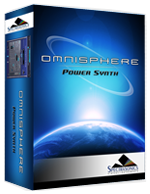EDIT PAGE - Oscillator Timbre Control

The TIMBRE slider varies the harmonic tone
quality of the Soundsource by altering the tonal characteristics of the
original sample(s) in different ways. There are two TIMBRE modes, CRUSH and SHIFT. The center-point of this bidirectional slider is the null
point – meaning no TIMBRE change will occur.
TIMBRE CRUSH MODE – Polyphonic Bit-Crushing
(Distortion) and filtering are applied to the Soundsource. Bit-Crushing with a Low-Pass Filter is
applied left of the center-point. Right of the center-point, Bit-Crushing with a High-Pass filter is
applied. Timbre Crushing works
effectively with any Soundsource.
TIMBRE SHIFT MODE - Transposes the mapping of the
samples in one direction and changes the pitch in the opposite. This results in significant harmonic
changes in the Soundsource. Moving
the TIMBRE slider to the right will transpose the sample mapping down and the
pitches up and vise versa when moving it to the left.
When SHIFT is applied, in either direction, the
character of the Soundsource can change significantly. And when the SHIFT is used as a
modulation target, the character of the Soundsource can change dynamically.
NOTE: The more samples the
Soundsource has mapped across the keyboard, the more effective that TIMBRE
SHIFT will be. Conversely, with a
texture or other Soundsource that only contains a single sample, SHIFT will
have no effect.
TIP: To see how many samples the
Soundsource uses, select the Soundsource Zoom icon at the top of the OSCILLATOR
header and refer to the ‘SPECS’.
NOTE: Because of the way TIMBRE
SHIFT works, changes to the modulation of the TIMBRE slider must be retriggered
to hear the effect. TIMBRE changes
can’t be heard on a sustained note.


